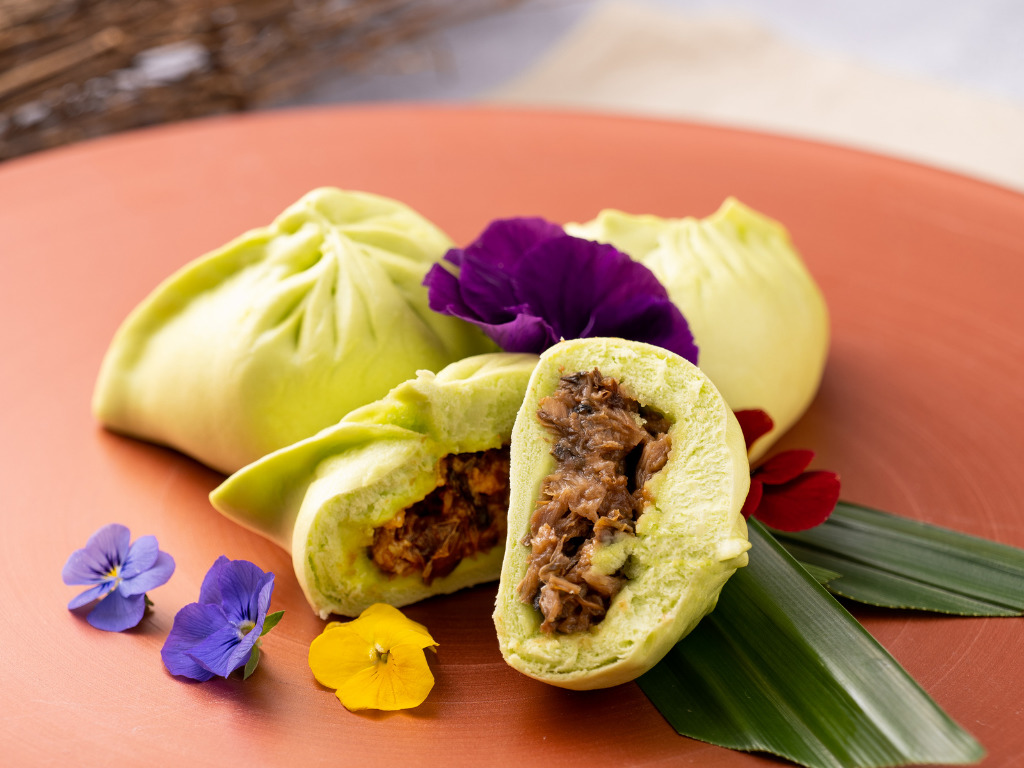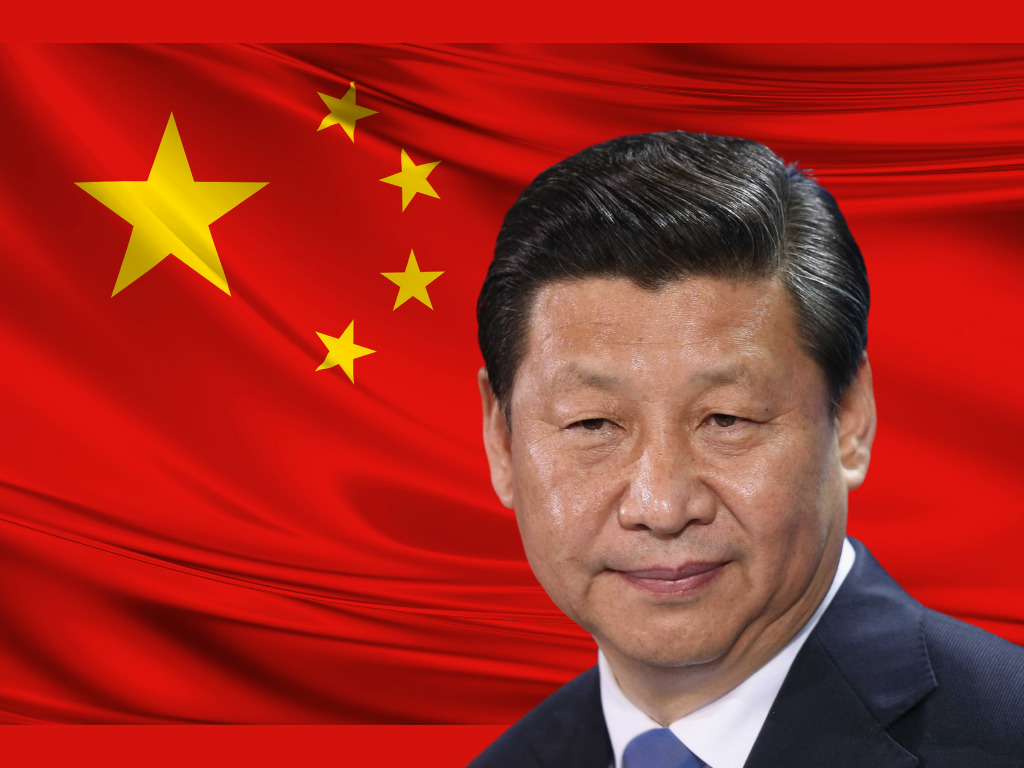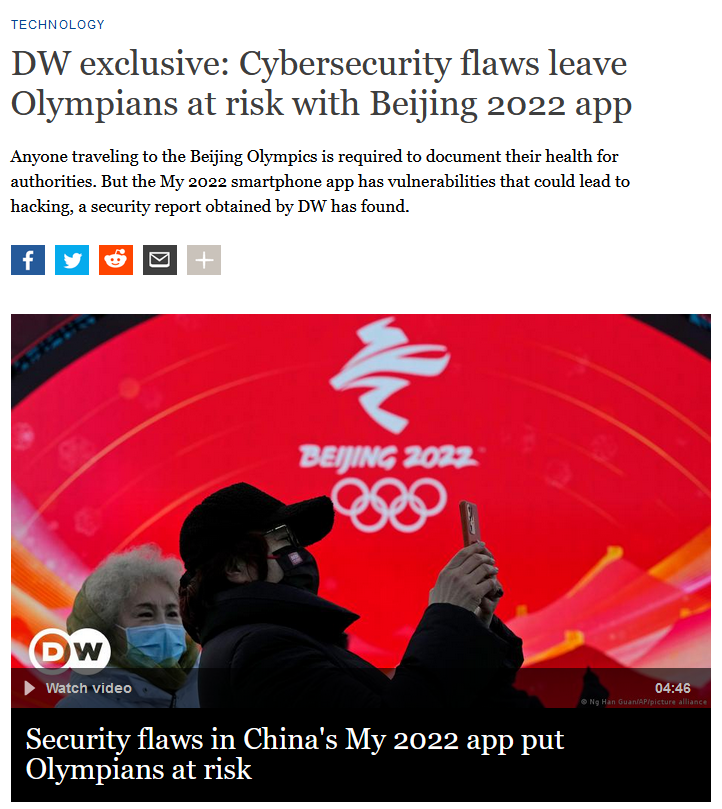
Just as the relentless grinding of the earth’s tectonic plates produces earthquakes and volcanic eruptions, so the endless superpower struggle for dominance over Eurasia is fraught with tensions and armed conflict. Beneath the visible outbreak of war in Ukraine and the U.S.-Chinese naval standoff in the South China Sea, there is now an underlying shift in geopolitical power in process across the vast Eurasian landmass — the epicenter of global power on a fast-changing, overheating planet. Take a moment to step back with me to try to understand what’s now happening on this increasingly embattled globe of ours.
If geology explains the earth’s eruptions, geopolitics is the tool we need to grasp the deeper meaning of the devastating war in Ukraine and the events that led to this crisis. As I explain in my recent book, To Govern the Globe: World Orders and Catastrophic Change, geopolitics is essentially a method for the management of empire through the use of geography (air, land, and sea) to maximize military and economic advantage. Unlike conventional nations, whose peoples can be readily mobilized for self-defense, empires are, by dint of their extraterritorial reach and the perils inherent in any foreign military deployment, a surprisingly fragile form of government. To give an empire a fighting chance of survival against formidable odds requires a resilient geopolitical architecture.
For nearly 100 years, the geopolitical theories of an obscure Victorian geographer, Sir Halford Mackinder, have had a profound influence on a succession of leaders who sought to build or break empires in Eurasia — including Adolf Hitler, U.S. National Security Advisor Zbigniew Brzezinski, and, most recently, Vladimir Putin. In an academic essay published in 1904, when the Trans-Siberian Railway was completing its 5,700-mile crawl from Moscow to Vladivostok, Mackinder argued that future rails would knit Eurasia into a unitary landmass that, along with Africa, he dubbed the tri-continental “world island.” When that day came, Russia, in alliance with another land power like Germany — and, in our time, we might add China — could expand across Eurasia’s endless central “heartland,” allowing, he predicted, “the use of vast continental resources for fleet-building, and the empire of the world would be in sight.”
As the Versailles Peace Conference opened in 1919 at the end of World War I, Mackinder turned that seminal essay into a memorable maxim about the relationship between East European regions like Ukraine, the Central Asian heartland, and global power. “Who rules East Europe commands the Heartland,” he wrote. “Who rules the Heartland commands the World-Island. Who rules the World-Island commands the World.”
At the core of recent conflicts at both ends of Eurasia is an entente between China and Russia that the world hasn’t seen since the Sino-Soviet alliance at the start of the Cold War. To grasp the import of this development, let’s freeze frame two key moments in world history — Communist Chinese leader Mao Zedong’s Moscow meeting with the Soviet Union’s Joseph Stalin in December 1949 and Vladimir Putin’s summit in Beijing with Xi Jinping just last month.
To avoid facile comparisons, the historical context for each of those meetings must be kept in mind. When Mao came to Moscow just weeks after proclaiming the People’s Republic in October 1949, China had been ravaged by a nine-year war against Japan that killed 20 million people and a five-year civil war that left seven million more dead.
In contrast, having defeated Hitler, seized an empire in eastern Europe, rebuilt his socialist economy, and tested an atomic bomb, making the Soviet Union a superpower, Stalin was at the peak of his strength. In contrast to China’s army of ill-equipped infantry, the Soviet Union had a modern military with the world’s best tanks, jet fighters, and missiles. As the globe’s top communist, Stalin was “the boss” and Mao came to Moscow as essentially a supplicant.
When Mao Met Stalin
During his two-month trip to Moscow starting in December 1949, Mao sought desperately needed economic aid to rebuild his ravaged land and military support for the liberation of the island of Taiwan. In a seemingly euphoric telegram sent to his comrades in Beijing, Mao wrote:
“Arrived in Moscow on the 16th and met with Stalin for two hours at 10 p.m. His attitude was really sincere. The questions involved included the possibility of peace, the treaty, loan, Taiwan, and the publication of my selected works.”
But Stalin surprised Mao by refusing to give up the territorial concessions in northern China that Moscow had won at the 1945 Yalta conference, saying the issue couldn’t even be discussed until their subsequent meeting. For the next 17 days, Mao literally cooled his heels waiting during a freezing Moscow winter inside a drafty dacha where, as he later recalled, “I got so angry that I once pounded the table.”
Finally, on January 2, 1950, Mao cabled the communist leadership in Beijing:
“Our work here has achieved an important breakthrough in the past two days. Comrade Stalin has finally agreed to… sign a new Sino-Soviet Treaty of Friendship.”
With Russia giving up its territorial claims in exchange for assurances about demilitarizing the long border between the two countries, their leaders signed a Treaty of Friendship and Alliance in February 1950. It, in turn, sparked a sudden flow of Soviet aid to China whose new constitution hailed its “indestructible friendship” with the Soviet Union.
But Stalin had already planted the seeds for the Sino-Soviet split to come, embittering Mao, who later said Russians “have never had faith in the Chinese people and Stalin was among the worst.”
At first, the China alliance proved a major Cold War asset for Moscow. After all, it now had a useful Asian surrogate capable of dragging the U.S. into a costly conflict in Korea without the Soviets suffering any casualties at all. In October 1950, Chinese troops crossed the Yalu River into a Korean maelstrom that would drag on for three years and cost China 208,000 dead troops as well as 40% of its budget.
Following Stalin’s death in May 1953 and the Korean armistice two months later, the new Soviet leader Nikita Khrushchev tried to repair relations by presiding over a massive, yet distinctly inequitable program of economic aid to China. However, he also refused to help that country build an atomic bomb. It would be a “huge waste,” he said, since China was safe under the Soviet nuclear umbrella. At the same time, he demanded the joint development of uranium mines Soviet scientists had discovered in southwest China.
Over the next four years, those initial nuclear tensions grew into an open Sino-Soviet split. In September 1959, Khrushchev visited Beijing for a disastrous seven-hour meeting with Mao. In 1962, Mao finally ended diplomatic relations entirely, blaming Moscow for failing to launch a nuclear strike on the U.S. during that year’s Cuban missile crisis.
In October 1964, China’s successful test of a 22-kiloton nuclear bomb marked its arrival as a major player on the world stage. That bomb not only made it an independent world power but transformed the Sino-Soviet split from a war of words into a massive military confrontation. By 1968, the Soviet Union had 16 divisions, 1,200 jet aircraft, and 120 medium-range missiles arrayed along the Sino-Soviet border. Meanwhile, China was planning for a Soviet attack by building a nuclear-hardened “underground city” that spread for 30 square miles beneath Beijing.
Washington’s Cold War Strategy
More than any other event since World War II, the short-lived Sino-Soviet alliance changed the course of world history, transforming the Cold War from a regional power struggle over Eastern Europe into a volatile global conflict. Not only was China the world’s largest nation with 550 million people, or 20% of all humanity, but its new communist government was determined to reverse a half-century of imperialist exploitation and internal chaos that had crippled its international influence.
The rise of China and the conflict in Korea forced Washington to radically revise its strategy for fighting the Cold War. Instead of focusing on NATO and Europe to contain the Soviet Union behind the Iron Curtain, Washington now forged mutual defense pacts from Japan to Australia to secure the offshore Pacific littoral. For the past 70 years, that fortified island rim has been the fulcrum of Washington’s global power, allowing it to defend one continent (North America) while dominating another (Eurasia).
To tie those two axial ends of Eurasia into a strategic perimeter, Cold War Washington ringed the Eurasian continent’s southern rim with chains of steel -– including three navy fleets, hundreds of combat aircraft, and a string of mutual-defense pacts stretching from NATO in Europe to ANZUS in the South Pacific. It took a decade, but once Washington accepted that the Sino-Soviet split was the real thing, it belatedly began to cultivate an entente with Beijing that would leave the Soviet Union ever more geopolitically isolated, contributing to its ultimate implosion and the end of the Cold War in 1991.
That left the U.S. as the world’s dominant power. Nonetheless, even without a near-peer rival on the planet, Washington refused to cash in its “peace dividend.” Instead, it maintained its chains of steel ringing Eurasia — including those three naval fleets and hundreds of military bases, while making multiple military forays into the Middle East (some disastrous) and even recently forming a new Quadrilateral alliance with Australia, India, and Japan in the Indian Ocean. For 15 years following Beijing’s admission to the World Trade Organization in 2001, a de facto economic alliance with China also allowed the U.S. sustained economic growth.
When Putin Met Xi
Last month, when Vladimir Putin met Xi Jinping in Beijing at the start of the Winter Olympics, it proved a stunning reversal of the Stalin-Mao moment 70 years earlier. While Russia’s post-Soviet economy remains smaller than Canada’s and overly dependent on petroleum exports, China has become the planet’s industrial powerhouse with the world’s largest economy (as measured in purchasing power) and 10 times the population of Russia. Moscow’s heavy-metal military still relies on Soviet-style tanks and its nuclear arsenal. China, on the other hand, has built the world’s largest navy, its most secure global satellite system, and its most agile missile armada, capped by cutting-edge hypersonic missiles whose 4,000 miles-per-hour speed can defeat any defense.
This time, therefore, it was the Russian leader who came to China’s capital as the supplicant. With Russian troops massing at Ukraine’s borders and U.S. economic sanctions looming, Putin desperately needed Beijing’s diplomatic backing. After years of cultivating China by offering shared petroleum and natural-gas pipelines and joint military maneuvers in the Pacific, Putin was now cashing in his political chips.
At their February 4th meeting, Putin and Xi drew on 37 prior encounters to proclaim nothing less than an ad-hoc alliance meant to shake the world. As the foundation for their new “global governance system,” they promised to “enhance transport infrastructure connectivity to keep logistics on the Eurasian continent smooth and… make steady progress on major oil and gas cooperation projects.” These words gained weight with the announcement that Russia would spend another $118 billion on new oil and gas pipelines to China. (Four-hundred billion dollars had already been invested in 2014 when Russia faced European sanctions over its seizure of Crimea from Ukraine.) The result: an integrated Sino-Russian oil-and-gas infrastructure is being built from the North Sea to the South China Sea.
In a landmark 5,300-word statement, Xi and Putin proclaimed the “world is going through momentous changes,” creating a “redistribution of power” and “a growing demand for… leadership” (which Beijing and Moscow clearly intended to provide). After denouncing Washington’s ill-concealed “attempts at hegemony,” the two sides agreed to “oppose the… interference in the internal affairs of sovereign states under the pretext of protecting democracy and human rights.”
To build an alternative system for global economic growth in Eurasia, the leaders planned to merge Putin’s projected “Eurasian Economic Union” with Xi’s already ongoing trillion-dollar Belt and Road Initiative to promote “greater interconnectedness between the Asia Pacific and Eurasian regions.” Proclaiming their relations “superior to political and military alliances of the Cold War era,” an oblique reference to the tense Mao-Stalin relationship, the two leaders asserted that their entente has “no limits… no ‘forbidden’ areas of cooperation.” On strategic issues, the two parties were adamantly opposed to the expansion of NATO, any move toward independence for Taiwan, and “color revolutions” such as the one that had ousted Moscow’s Ukrainian client in 2014.
Given the Ukraine invasion just three weeks later, Putin got what he so desperately needed. In exchange for feeding China’s voracious appetite for energy (on a planet already in a climate crisis of the first order), Putin got a condemnation of U.S. interference in “his” sphere. In addition, he won Beijing’s diplomatic support — however hesitant China’s leadership might actually be about events in Ukraine — once the invasion started. Although China has been Ukraine’s main trading partner since 2019, Beijing set aside those ties and its own advocacy of inviolable sovereignty to avoid calling Putin’s intervention an “invasion.”
A Planet Mackinder Would Hardly Recognize
In fact, even before the invasion of Ukraine, Russia and China were pursuing a strategy of ratcheting up slow, relentless pressure at both ends of Eurasia, hoping the U.S. chains of steel ringing that vast continent would sooner or later snap. Think of it as a strategy of push-push-punch.
For the past 15 years, Putin has been responding to NATO in just that manner. First, through surveillance and economic leverage, Moscow has tried to keep client states in its orbit, something Putin learned from his four years as a KGB agent working with East Germany’s Stasi secret police in the late 1980s. Next, if a favored autocrat is challenged by pro-democracy demonstrators or a regional rival, a few thousand Russian special forces are sent in to stabilize the situation. Should a client state try to escape Moscow’s orbit, however, Putin promptly moves to massive military intervention and the expropriation of buffer enclaves, as he did first in Georgia and now in Ukraine. Through this strategy, he may be well on his way to reclaiming significant parts of the old Soviet sphere of influence in East Europe, Central Asia, and the Middle East.
Due south of Moscow in the ever-volatile Caucasus Mountains, Putin crushed NATO’s brief flirtation with Georgia in 2008, thanks to a massive invasion and the expropriation of the provinces of North Ossetia and Abkhazia. After decades of fighting between the former Soviet republics of Armenia and Azerbaijan, Russia recently sent in thousands of “peace-keeping” forces to resolve the conflict in favor of the loyal, pro-Moscow regime in Azerbaijan. Further east, when democratic protesters challenged Moscow’s local ally in Kazakhstan in January, thousands of Russian troops — under the rubric of Moscow’s version of NATO — flew into the former capital, Almaty, where they helped crush the protests, killing dozens and wounding hundreds.
In the Middle East where Washington backed the ill-fated Arab spring rebels who tried to topple Syria’s ruler, Bashar al-Assad, Moscow operates a massive air base at Latakia in that country’s northwest from which it has bombed rebel cities like Aleppo to rubble, while serving as a strategic counterweight to U.S. bases in the Persian Gulf.
But Moscow’s main push has been in Eastern Europe. There, Putin backed Belarus’s strongman, Alexander Lukashenko, in crushing the democratic opposition after he had rigged the 2020 elections, and so making Minsk a virtual client state. Meanwhile, he’s been pressing relentlessly against Ukraine since his loyal client there was ousted in the 2014 Maidan “color revolution.” First, he seized Crimea in 2014 and then he armed separatist rebels in that country’s eastern region adjacent to Russia. Last month, after proclaiming that “modern Ukraine was entirely created by Russia,” Putin recognized the “independence” of those two separatist enclaves, much as he had done years before in Georgia.
On February 24th, the Russian president sent nearly 200,000 troops across the Ukraine’s borders to seize much of the country and its capital, Kyiv, as well as replace its feisty president with a pliable puppet. As international sanctions mounted and Europe considered providing Ukraine with jet fighters, Putin ominously put his nuclear forces on high alert to make it clear he would brook no interference with his invasion.
Meanwhile, at the eastern end of Eurasia, China has pursued a somewhat similar, if more subtle push-push strategy, with the punch yet to come. Starting in 2014, Beijing began dredging a half-dozen military bases from atolls in the South China Sea, slowly ramping up their role from fishing ports to full-fledged military bases that now challenge any passing U.S. naval patrol. Then came swarming fighter squadrons over the Taiwan Strait and East China Sea, followed, last October, by a joint Chinese-Russian fleet of 10 ships that steamed provocatively around Japan in what had previously been considered unchallenged U.S. waters.
If Xi follows Putin’s playbook, then all that push/push could indeed lead to a punch — possibly an invasion of Taiwan to reclaim lands Beijing sees as an integral part of China, much as Putin sees Ukraine as a former Russian imperial province that should never have been given away.
Should Beijing attack Taiwan, Washington might find itself hamstrung to do anything militarily except express admiration for the island’s heroic yet futile resistance. Should Washington send its aircraft carriers into the Taiwan Straits, they would be sunk within hours by China’s formidable DF-21D “carrier-killer” missiles or its unstoppable hypersonic ones. And once Taiwan was gone, Washington’s position on the Pacific littoral could be effectively broken and a retreat to the mid-Pacific preordained.
All of this looks possible on paper. However, in the grim reality of actual invasions and military clashes, amid the deaths of thousands of innocent civilians, and on a planet that’s seen better days, the very nature of geopolitics is likely to be up for grabs. Yes, it’s possible that, if Washington is whipsawed between the eastern and western edges of Eurasia with periodic eruptions of armed combat from the Xi-Putin entente, its chains of steel could strain and finally snap, effectively evicting it from that strategic land mass.
As it happens, though, given a Sino-Russian alliance so heavily based on the trade in fossil fuels, even if Vladimir Putin doesn’t himself go down thanks to his potentially disastrous invasion of Ukraine, both Beijing and Moscow may find themselves whipsawed in the years to come by a troubled energy transition and climate change. The ghost of Sir Halford Mackinder might then point out to us not just that U.S. power will fade with the loss of Eurasia, but that so much other power may fade as well on an ever hotter, ever more endangered planet he couldn’t in his lifetime have truly imagined.

































